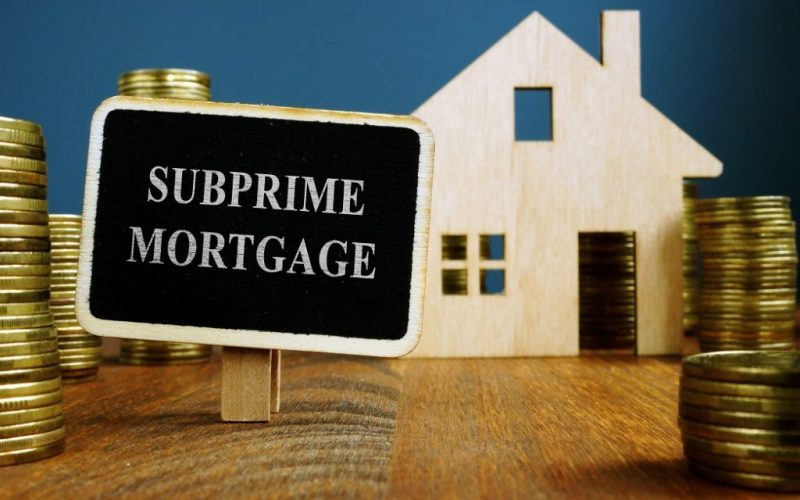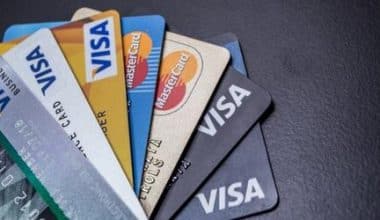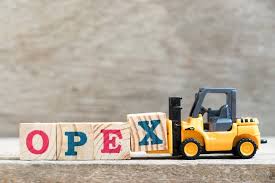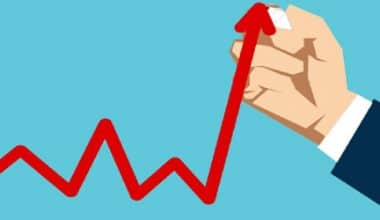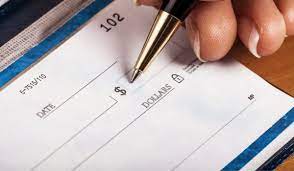Concepts of Subprime Meaning, Subprime Mortgage, Subprime loan, and Subprime crisis are our key concentrations in this post.
SUBPRIME MEANING
The meaning of subprime refers to borrowers or loans offered at rates well above the prime rate and having poor credit ratings. This is a result for borrowers that have below-average credit classification or also borrowers with a tarnished or limited credit history. All these are subjects to higher than average interest rates. Most often Lenders use a system called the ‘credit scoring’ to determine which loans a borrower may qualify for.
Subprime borrowers are presently at less risk than in other types of unsecured subprime lending products. This is because the mortgage itself is in guidance with a home as collateral. Sometimes some borrowers are referred to as subprime even having a good credit history. Because the borrowers have decided not to provide verification of income or assets in the loan process.
More Details
Even still subprime borrowers may experience more hard time in obtaining a mortgage. And also, they should expect to pay a higher interest rate than average borrower. The loans for the Subprime classification are called the stated income and stated asset (SISA) or No income No asset (NINA) loans.
Up to 25% of these mortgage originations are known as subprime. This is exactly why the term originates its name from the prime rate. A rate at which businesses and individuals with a good credit history borrow money from.
About one-quarter of the domestic housing market are the makeups of the subprime. Their products include credit and non-mortgage loans. In the past subprime has contributed to financial crises by lending in higher risk even in the lower credit rating of borrowers.
SUBPRIME MORTGAGE
Generally, mortgage loans are put either as prime or subprime, according to the risk of the borrower defaulting on the loan. A mortgage is subprime if it’s given to someone who has poor credit meaning a credit score below 650. The types of mortgage loans include adjustable rate mortgages, fixed-interest mortgages, and also interest-only mortgages.
Subprime mortgages are loans that banks intentionally grant to subprime borrowers. Which do not include loans that develop credit problems after acquisition. Also, subprime loans that are later upgraded to prime loans, or government-insured loans.
Lenders offer subprime mortgage loans, but the process requires much longer documentation. And also, lenders must verify that borrowers can pay off the loan. Subprime borrowers on their part have also been delinquent, bankrupt, or have low credit scores and also low income. They’re subprime if the borrowers have been bankrupt in the last five years. And also, if the borrowers annual income is less than half of the total yearly principal + interest payments on the loan.
More Explanation
According to the Federal Deposit Insurance Corporation (FDIC) lenders have been reluctant on lending funds to subprime borrowers. Specifically, because of these reasons which include that they’ve been delinquent on payment with two or more 30-day delinquencies in the past year. The lender has no choice but to write off or write down the loan. Also they go for a judgment against them in the last two years.
Interest rate associating with a subprime mortgage is usually high. So as, to compensate lenders for taking the risk that the borrower will default on with the loan. Largely why the 2008 financial crisis blames the large part on proliferation of subprime mortgages brought in offering to buyers incapable in the years leading up to the meltdown. The interest rate associated with a subprime mortgage is also depending on four factors which include: credit score, the size of the down payment. And also, the number of late payment delinquencies on a borrower’s credit report, as well as the types of delinquencies found on the report.
Typically, mortgage applicants are in grades ranging from A to F, with the A scores going to those with exemplary credit. And then, the F scores go to borrowers with no ability to repay a loan at all. Lower-rated candidates resign themselves to subprime loans if they’re going to get loans at all.
SUBPRIME LOAN
A subprime loan is simply loan lenders offer to borrowers who do not qualify for conventional loans. Due to various high-risk factors, which include poor credit history, low income, and a high debt-to-income ratio. The loans have higher interest rates than conventional loans because of the heightening risk associated with subprime borrowers.
This is a way of offering finance to individuals with poor credit, low income, or credit history with limits. Most types of loans have subprime options because they focus on the borrower’s income. instead of their credit score to ensure that the borrower has enough money to repay the loan. Although there is officially no credit score cutoffs for many types of loans.
Subprime loan fundamentally aid people with poor or little credit history to qualify for loans. And also, help them in buying a house, or car, or finance other things that may be hard or impossible on their own.
Because many borrowers may have the financial ability to pay off a loan. But in most cases need help qualifying for a loan because of their credit history. Predatory lenders look for desperate borrowers who have exhausted other options, know little about loans, and charge these borrowers high interest and fees. In some cases, the lenders go as far as hindering a borrower’s ability to repay the loan by charging high-interest rates. And also, by taking advantage of a borrower’s situation or lack of financial understanding. Virtually almost all states have laws to prevent high-interest rate loans and control predatory lending although it still occurs.
TYPES OF SUBPRIME LOAN
There are subprime options for most loan types because all subprime loans function similarly. Particularly because they are loans for borrowers with a high risk of defaulting. For the most obvious reasons of low credit scores, poor or little credit history, a high debt-to-income ratio, or other factors. The types of subprime loans include
- SUBPRIME AUTO LOANS
- THE SUBPRIME MORTGAGE
- SUBPRIME PERSONAL LOANS
PROS AND CONS OF SUBPRIME LOANS
Subprime loans have bad reputations mostly because of their name, high-interest rates, and their association with predatory lending. However, there are some benefits to getting a subprimes loan when you don’t qualify for a conventional loan. But the borrowers must also be capable of repaying a loan.
Although subprime loans possess some positive qualities, you should only borrow if you are sure enough that you will be able to pay off the loan. Only in paying off this loan early, will you benefit and also, fix your credit score. Again, there are much higher fees associated with subprime loans. Defaulting on this loan will ruin your credit score.
The advantages and disadvantages include
| Pros | Cons |
| Borrowers with poor or little credit history. Or even a high debt-to-income ratio qualifies for subprime loans. | Subprime loans carry more risk to lenders which can also lead to higher interest rates for borrowers. |
| Government regulations also try to control how high-interest rates on loans can be. And also, enforce rules that lenders must follow. | Predatory lenders always charge exorbitant interest rates. They also, have hidden fees that may hurt borrowers if they fail to prepare. |
| Subprime loans can aid fix borrowers’ credit scores only if they make timely monthly payments. | The loans generally have higher interest rates than conventional loans. Possibly result in high monthly payments. |
| Opportunities for subprime borrowers to own homes, cars, and other things that they wouldn’t be unable to fund on their own. | Fees include processing fees and high up-front payments that some borrowers may not be able to afford. Are always waiting for borrowers to pay up. |
| These loans can help borrowers who need to pay off other debts. In a way of consolidating the debt and making payments easier. | Borrowers are more likely to default on loans and ruin their credit. Because of the high-interest rates of the subprime loans. |
CONCEPTS OF SUBPRIME CRISIS MEANING
The concept of “subprime,” meaning “crisis or meltdown,” is the sharp increase in high-risk mortgages. This meltdown in 2007 was a part of the mid-2000s housing boom along with its low-interest rates. And also, many lenders offer home loans to borrowers with poor credit.
At the time when the real estate bubble burst, many borrowers could not make payments on their subprime mortgages because of the crisis. The concept of the subprime crisis led to the financial crisis, the Great Recession, and also a massive sell-off in the equity markets. A booming economy was what led to an increase in the demand for homes and subsequently, mortgages. However, the housing boom is also what led to record levels of homeownership in the U.S. Making banks and mortgage companies have difficulty finding new homebuyers.
To Add More
During the early-to-mid 2000s, lending standards that some lenders were using became so relaxing. And so, its result sparks the creation of the NINJA loan: “no income, no job, and no asset—no problem.”. Mortgage-backed security (MBS) is an investment that is similar to a fund that contains basket home loans. This investment also pays a periodic interest rate. The securities were bought from the banks that issues them and sold to investors in the U.S. and internationally.
Investment firms were also eager to buy these loans and repackage them as mortgage-backed securities (MBSs) and other structure credit products. However, many subprime mortgages were adjustable-rate loans (ARM). This means the concepts of subprime crisis meaning it is a type of mortgage loan where the interest rate can change throughout the life of the loan typically having a fixed interest. Also, the rate of this loan can change or reset within a certain number of months or years.
More Details
When the housing market started crashing, and borrowers were unable to pay their mortgages, banks were also full with loan losses on their balance sheets. And unemployment increased across the nation, many borrowers foreclosed on their mortgages. Unfortunately, the Great Recession started, resulting in credit and liquidity drying up. Many of the subprime adjustable-rate mortgages were in high-interest rates.
A sudden increase in mortgage rates is a major factor in the growing number of people failing to make loan payments–starting in 2007 and heightening in 2009. Job losses throughout the economy are also a major feature that did not help. because many borrowers were losing their jobs, and their mortgage payments were going up at the same time. It is nearly impossible to refinance the mortgage to a lower fixed rate without a job. The losses were so large that some banks were out of business or bought by another bank to save them.
The US concept of “subprime crisis” refers is a multinational financial crisis between 2007 and 2010 that contributed to the 2007–2008 global financial crisis. triggered by the large decline in home prices after the collapse of a housing bubble. And leading to mortgage delinquencies, foreclosures, and also devaluation of housing-related securities. Following also declines in residential investment and Great Recession, reductions in household spending, and then business investment. Spending reductions were also more significant in areas with a combination of high household debt and large housing price declines.
What is meant by subprime lending?
Subprime lending is the practice of giving loans to those with bad credit records, low incomes, or no credit histories at all.
What causes a subprime crisis
An earlier expansion of mortgage lending, including to borrowers who would have previously had trouble securing mortgages, which both contributed to and was helped by quickly rising property values, was the root cause of the subprime mortgage crisis that occurred between 2007 and 2010.
How do you know if a loan is a subprime loan?
The term “subprime” refers to the borrower’s credit score rather than the interest rates that are frequently associated with these mortgages. Borrowers with FICO credit scores below 640 are frequently forced to take out subprime mortgages with higher interest rates.
Who made money on subprime?
Paulson’s company profited greatly from what is occasionally referred to as the largest trade in history, and he personally made almost $4 billion from this trade alone. Goldman Sachs was persuaded by Paulson to promote hazardous mortgages in Arizona, California, Florida, and Nevada as secure investments.
Who started subprime?
The GSEs were instrumental in advancing the use of subprime loans. Franklin Raines introduced Fannie Mae to subprime loans for the first time in 1999, building on prior Fannie Mae initiatives in the 1990s that lowered mortgage down payment requirements.
How do subprime loans make money?
Subprime lenders swiftly increase their capital by imposing exorbitant interest rates on repaid loans. An interest rate on a subprime loan as high as 18% is not unusual.
Who benefits from subprime lending?
Home loans marketed to and targeted for customers with below-average credit scores are known as subprime mortgages. Many consumers who don’t qualify for the majority of conventional mortgages are given these loans.
CONCLUSION
Subprime is loans offered to people with really poor credit ratings and above the prime rate as well. These loans are great risks and are never good advice to anyone. All you need to know including their crisis also pros and cons. They all are topics to understand above in our discussions above.
- Crisis Communication Planning: Detailed Guide with Examples
- HOUSE POOR: Best Easy Guide to Buying a House Poor Credit (+ Free Tips)
- Crisis Management: Detailed Guide for Planning Crisis Management
.
.
